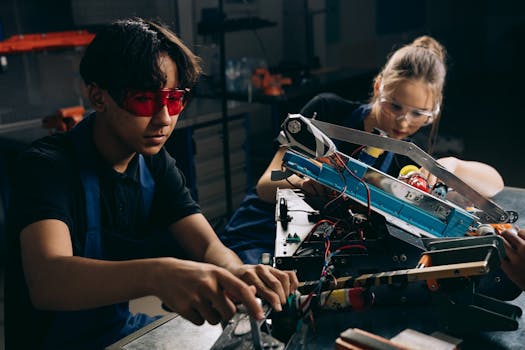
The Future of Work: Trends to Watch in 2025 – WordPress
Focus Keyword: The Future of Work

The future of work is rapidly changing, with trends like remote work, artificial intelligence, and upskilling on the rise. In this article, we’ll explore the top trends to watch in 2025 and how they’ll impact the workforce.
Introduction

The world of work is undergoing a significant transformation, driven by technological advancements, shifting workforce demographics, and evolving employee expectations. As we look to the future, it’s essential to stay ahead of the curve and understand the trends that will shape the workforce in 2025.
Trend 1: Remote Work

Remote work, also known as telecommuting, is becoming increasingly popular. With the advancement of technology, employees can now work from anywhere, at any time, as long as they have a stable internet connection. This trend is expected to continue in 2025, with more companies adopting flexible work arrangements to attract and retain top talent.
Trend 2: Artificial Intelligence

Artificial intelligence (AI) is revolutionizing the way we work, automating routine tasks, and enhancing productivity. In 2025, we can expect to see more AI-powered tools and platforms that will help employees work smarter, not harder. From chatbots to virtual assistants, AI will become an integral part of the workforce.
Trend 3: Upskilling and Reskilling

As technology continues to evolve, employees will need to acquire new skills to remain relevant in the workforce. Upskilling and reskilling will become essential for employees to stay ahead of the curve. In 2025, we can expect to see more emphasis on continuous learning and professional development, with companies investing in employee training and education programs.
Conclusion

The future of work is exciting and unpredictable, with trends like remote work, artificial intelligence, and upskilling on the rise. As we look to 2025, it’s essential to stay informed and adapt to the changing landscape. By understanding these trends, businesses and employees can prepare for the future and thrive in a rapidly changing world.
Preparing for the Future of Work

To prepare for the future of work, businesses and employees must be proactive and flexible. This includes investing in employee training and development programs, adopting flexible work arrangements, and leveraging technology to enhance productivity.
Section 2: The Impact of Technology on the Workforce

Technology is transforming the workforce, automating routine tasks, and enhancing productivity. In this section, we’ll explore the impact of technology on the workforce and how it will shape the future of work.
The Role of Artificial Intelligence

Artificial intelligence (AI) is playing an increasingly important role in the workforce, automating routine tasks, and enhancing productivity. In 2025, we can expect to see more AI-powered tools and platforms that will help employees work smarter, not harder.
The Rise of Virtual and Augmented Reality

Virtual and augmented reality (VR/AR) are becoming increasingly popular, with applications in industries such as healthcare, education, and entertainment. In 2025, we can expect to see more widespread adoption of VR/AR in the workforce, enhancing training and development programs, and improving employee engagement.
Section 3: The Importance of Work-Life Balance

With the advancement of technology, employees are now more connected than ever, with the ability to work from anywhere, at any time. However, this can lead to burnout and decreased productivity. In this section, we’ll explore the importance of work-life balance and how it will impact the future of work.
The Benefits of Flexible Work Arrangements

Flexible work arrangements, such as remote work and flexible hours, can have numerous benefits, including increased productivity, improved employee satisfaction, and reduced turnover. In 2025, we can expect to see more companies adopting flexible work arrangements to attract and retain top talent.
The Impact of Burnout on Employee Wellbeing

Burnout is a growing concern, with employees experiencing increased stress and decreased productivity. In 2025, we can expect to see more emphasis on employee wellbeing, with companies investing in programs and initiatives to reduce burnout and improve work-life balance.
Section 4: The Future of Work and Education

The future of work is closely tied to education, with employees requiring new skills to remain relevant in the workforce. In this section, we’ll explore the future of work and education, and how they will impact each other.
The Importance of Continuous Learning

Continuous learning is essential for employees to stay ahead of the curve, with technology evolving at a rapid pace. In 2025, we can expect to see more emphasis on continuous learning, with companies investing in employee training and development programs.
The Role of Education in Preparing for the Future of Work

Education plays a critical role in preparing employees for the future of work, providing them with the skills and knowledge required to succeed. In 2025, we can expect to see more emphasis on education and training, with companies and governments investing in programs and initiatives to prepare the workforce for the future.





